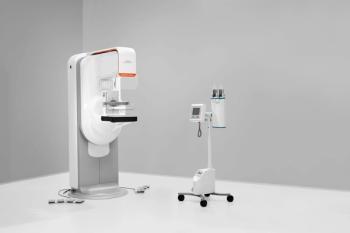
New Canadian Guidelines for Lung Cancer Screening
Annual CT lung cancer screening recommended for high risk patients.
Current and former smokers, aged 55 to 74, should undergo low-dose CT screening annually for three years, according to new Canadian Task Force on Preventive Healthcare guidelines, published in the
The key recommendations now include that high-risk adults, smokers with at least a 30-pack-year history and former smokers with a similar smoking history who quit within the previous 15 years, be screened with low-dose CT once a year for three consecutive years, and the screening should take place in a health care facility in which physicians have expertise in diagnosing and treating lung cancer. The recommendations also include that chest X-rays no longer be used for lung cancer screening, nor is routine screening needed for other adults, regardless of age or smoking history.
The updated recommendation for annual screening over three consecutive years is more conservative than other Canadian and international guidelines, which recommend ongoing annual or biennial screening.
"Screening for lung cancer aims to detect disease at an earlier stage, when it may respond better to treatment and be less likely to cause serious illness or death," Gabriela Lewin, MD, chair of the Canadian Task Force on Preventive Health Care guideline working group, said in a release.[[{"type":"media","view_mode":"media_crop","fid":"47129","attributes":{"alt":"Gabriela Lewin, MD","class":"media-image media-image-right","id":"media_crop_9998450225120","media_crop_h":"0","media_crop_image_style":"-1","media_crop_instance":"5524","media_crop_rotate":"0","media_crop_scale_h":"0","media_crop_scale_w":"0","media_crop_w":"0","media_crop_x":"0","media_crop_y":"0","style":"height: 233px; width: 180px; border-width: 0px; border-style: solid; margin: 1px; float: right;","title":"Gabriela Lewin, MD","typeof":"foaf:Image"}}]]
The authors noted that people who have a family history of lung cancer, those who have symptoms that may suggest lung cancer, or who have risk factors, such as exposure to second-hand smoke or previous radiation to the chest, should discuss their risks and individual needs for screening with their own physicians, as they are not covered by these guidelines.
"Smoking remains the primary risk factor for lung cancer; therefore, interventions to promote smoking cessation (which have benefits beyond decreasing the risk of lung cancer) should be incorporated into any screening program aimed at reducing lung cancer morbidity and mortality," the task force members wrote.
Newsletter
Stay at the forefront of radiology with the Diagnostic Imaging newsletter, delivering the latest news, clinical insights, and imaging advancements for today’s radiologists.




























